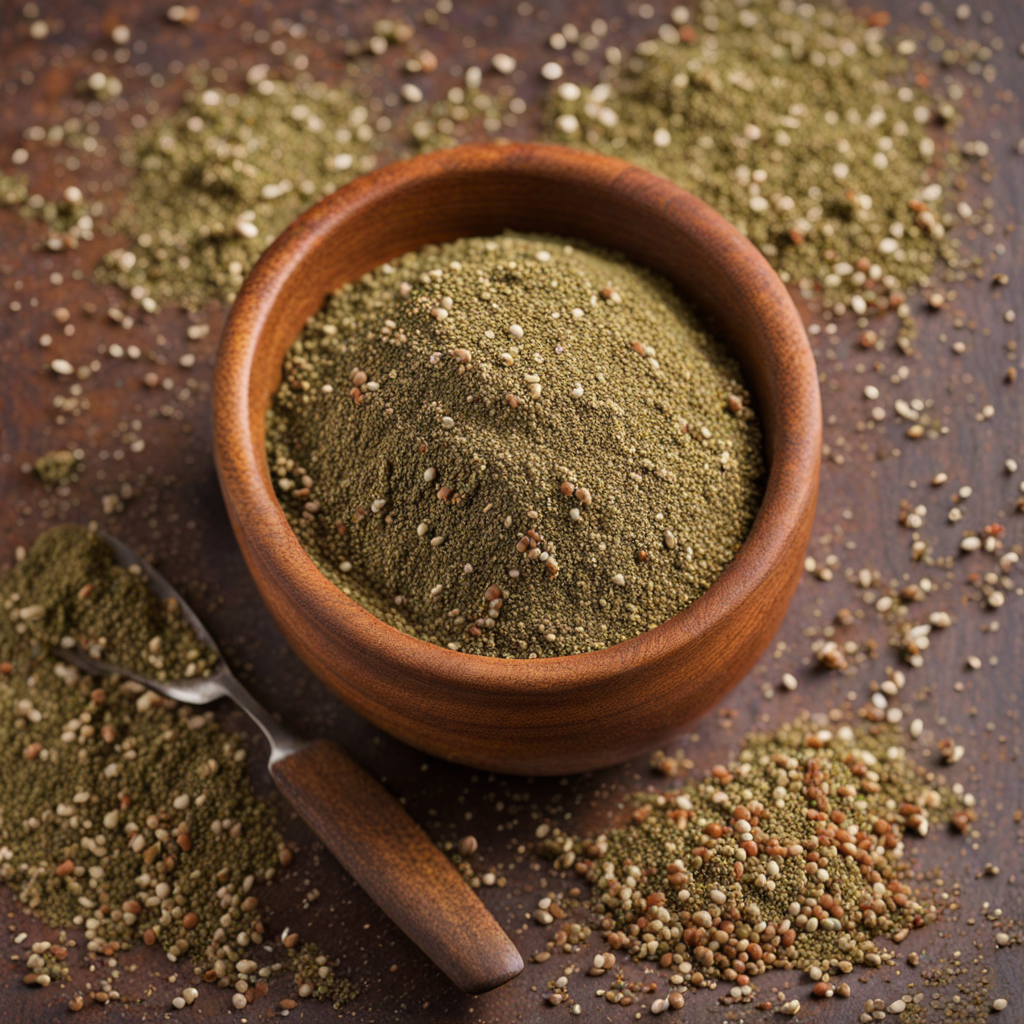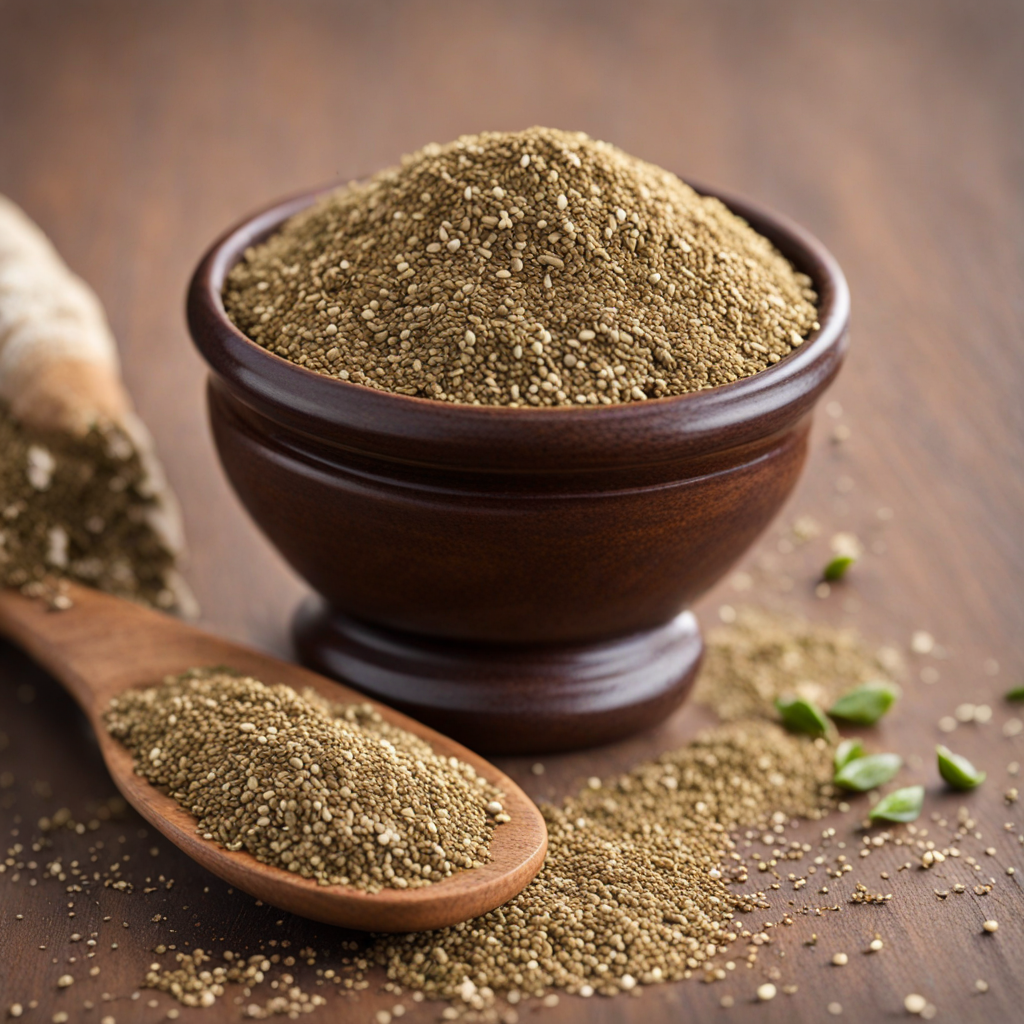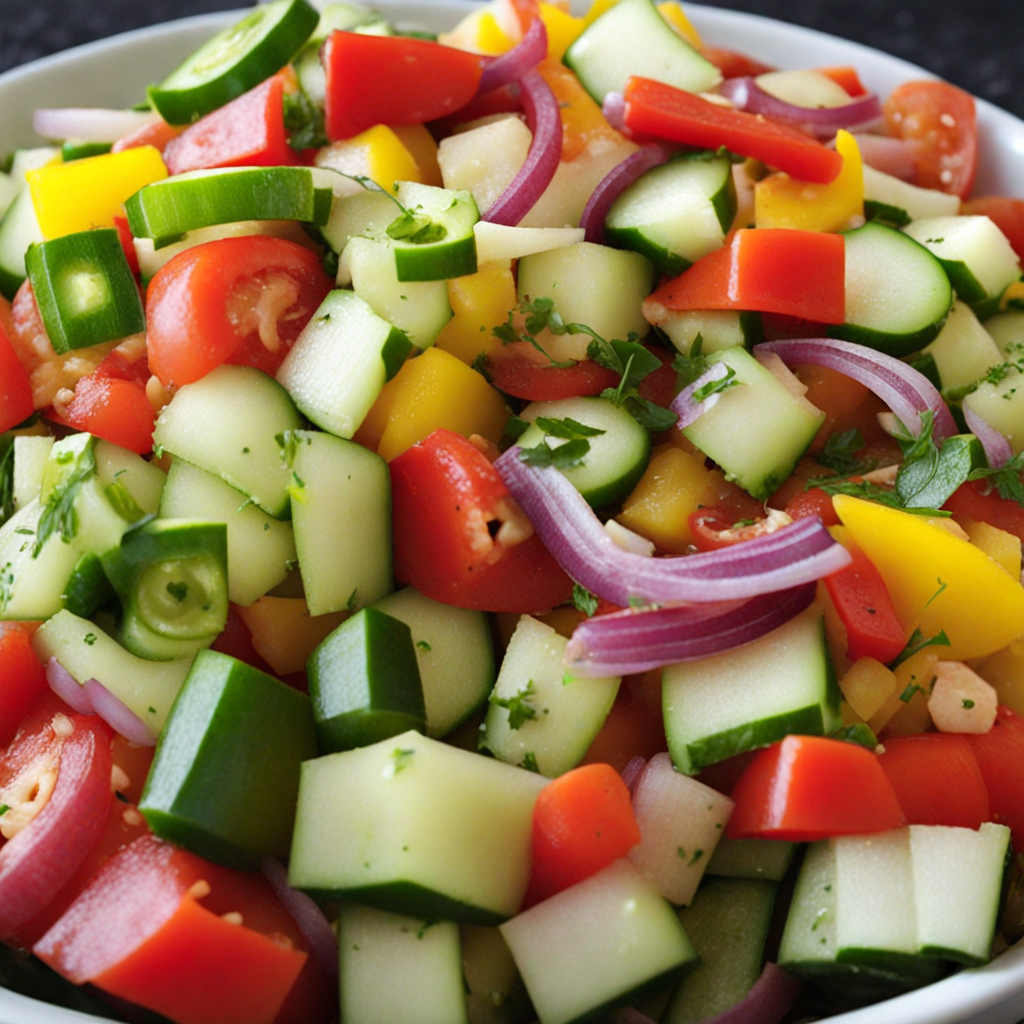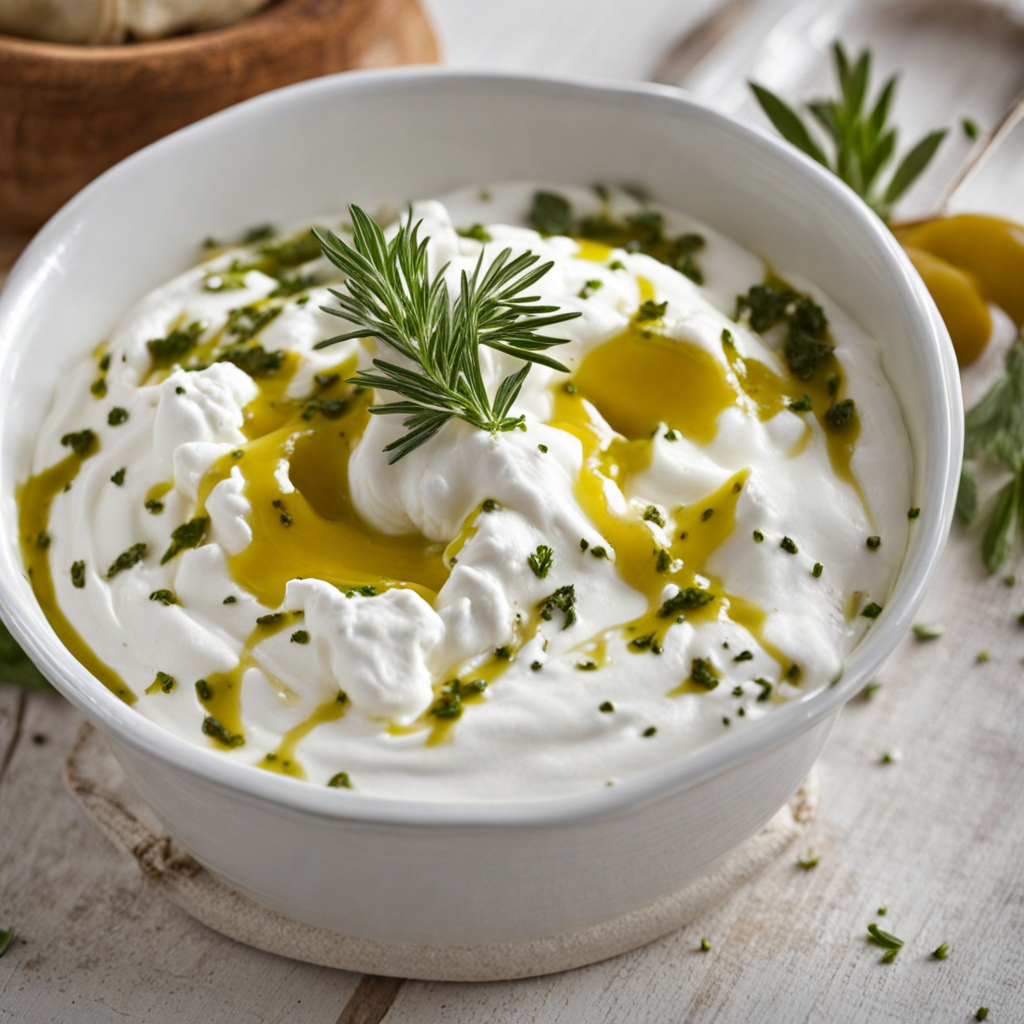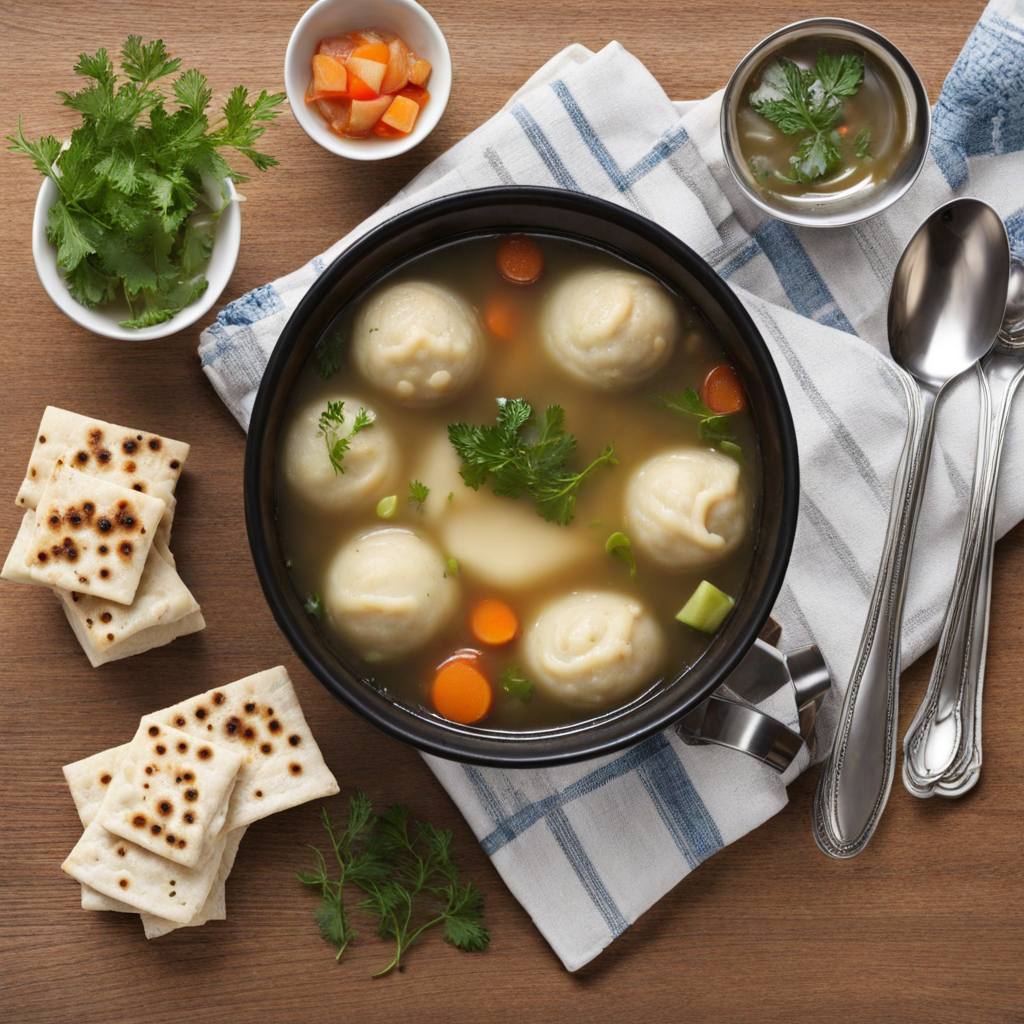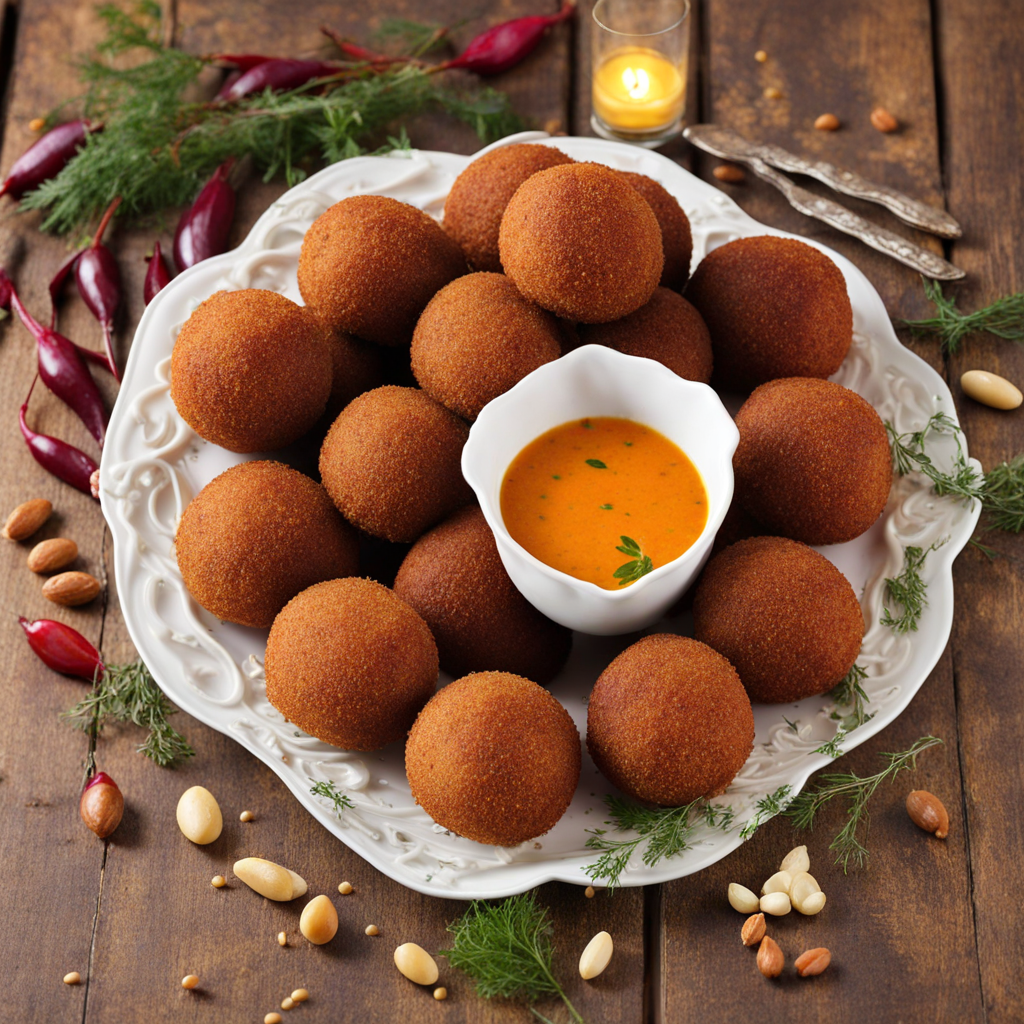Za'atar
Za'atar is a vibrant and aromatic blend of herbs and spices that has its roots deep in Middle Eastern cuisine, particularly in Israel. This unique seasoning typically includes dried thyme, oregano, marjoram, and sumac, which contributes a tangy citrus flavor, along with toasted sesame seeds that add a delightful crunch. The combination of these ingredients creates a complex taste profile that can elevate any dish, making it both savory and slightly nutty, with herbal undertones that evoke the essence of the Mediterranean landscape. In Israel, za'atar is not just a spice; it's a cultural staple that is often used to season meats, vegetables, and even bread. One of the most popular ways to enjoy za'atar is by mixing it with olive oil and spreading it on freshly baked pita or flatbread. This simple yet delicious preparation allows the flavors of the za'atar to shine through, creating a perfect appetizer or snack. Additionally, it is commonly sprinkled over labneh, a creamy yogurt cheese, enhancing its richness with a burst of flavor that is both refreshing and satisfying. Za'atar also has versatile applications in cooking, as it can be used to season roasted vegetables, grilled meats, or even sprinkled atop salads for an added dimension. Its earthy notes and fragrant aroma can transform everyday dishes into something extraordinary. Furthermore, za'atar is often associated with warm, communal meals in Israel, where it brings people together, enhancing not just the food, but also the experience of sharing flavors, stories, and traditions. Discovering za'atar is like embarking on a culinary journey that connects you to the heart of Israeli culture and its rich gastronomic heritage.
How It Became This Dish
Origin of Za'atar Za'atar is a culinary herb blend that has deep roots in Middle Eastern cuisine, particularly in the Levant region, which includes modern-day Israel, Palestine, Lebanon, Jordan, and Syria. The word "za'atar" itself can refer to both the herb and the spice blend made from it. The blend typically includes a mixture of dried thyme, oregano, marjoram, sesame seeds, and sumac, though variations exist, and local adaptations are common. The origins of za'atar trace back thousands of years, with its use documented in ancient texts. Archaeological evidence suggests that za'atar, particularly the wild thyme (Thymus syriacus), has been utilized since the time of the ancient Egyptians and throughout various civilizations. Za'atar was traditionally harvested from the wild, and its use was often tied to local agricultural practices. The herb was not only valued for its culinary uses but also for its medicinal properties. Ancient texts describe za'atar as a remedy for various ailments, including respiratory issues and digestive disorders. This dual purpose—culinary and medicinal—helped cement its place in the everyday lives of those in the region. Cultural Significance In Israel and the surrounding regions, za'atar holds significant cultural importance. It is more than just a spice; it symbolizes a connection to the land and the seasons. For many families, za'atar is a staple in their diets, often consumed with bread and olive oil, or sprinkled over vegetables and meats. This practice is a reflection of the communal and familial ties that food often fosters in Middle Eastern cultures. Za'atar gatherings, where families and friends come together to share meals, are common. The act of preparing za'atar is often imbued with tradition; many families have their own recipes passed down through generations. This shared culinary heritage plays a vital role in maintaining cultural identity, especially in a region marked by a rich tapestry of ethnicities and histories. Development Over Time As the centuries passed, the use of za'atar evolved. With the rise of trade routes, the blend began to spread beyond its original geographic confines. The ancient spice trade facilitated the introduction of za'atar to new regions, where it adapted to local tastes and customs. This interchange helped shape the diverse flavor profiles associated with za'atar today. In modern times, za'atar has gained international recognition, largely due to the global popularity of Middle Eastern cuisine. Chefs and home cooks alike have embraced the herb blend, incorporating it into dishes that range from roasted vegetables to gourmet pizzas. The versatility of za'atar allows it to transcend traditional boundaries, appealing to a wide audience. In Israel, it is commonly used in dishes such as man'ousheh, a traditional flatbread topped with za'atar and olive oil, which has become a beloved staple in contemporary Israeli cuisine. Regional Variations In Israel, za'atar can vary significantly from one region to another. Palestinian za'atar is often characterized by a more pronounced use of sumac, giving it a tangy flavor that reflects the local palate. In contrast, the Israeli version may lean towards a stronger emphasis on thyme and sesame seeds. This regional distinction speaks to the diversity within the culinary practices of neighboring cultures, showcasing how za'atar is both a unifying and dividing element in the culinary landscape. Moreover, the method of preparation can also differ. In some households, za'atar is made fresh by grinding the herbs and spices together, while in others, it is purchased pre-mixed from local markets. The choice reflects personal preference, family traditions, and the availability of ingredients, highlighting the adaptability of za'atar. Za'atar and Identity In contemporary Israel, za'atar has also become a symbol of national and cultural identity. As the culinary scene evolves, chefs are reinterpreting traditional dishes to reflect modern sensibilities while still honoring their roots. Za'atar frequently appears on restaurant menus, showcasing its flexibility and appeal. The blend transcends cultural and religious boundaries, becoming a shared ingredient among Jewish, Muslim, and Christian communities. Additionally, za'atar has become emblematic of the broader conversation around food sovereignty and the importance of local agriculture. As more people become aware of the significance of sourcing local ingredients, za'atar serves as a reminder of the region's agricultural heritage. The revival of traditional farming practices is evident in the growing interest in organic and sustainable methods, ensuring that this ancient herb remains a vital part of the landscape for future generations. Health Benefits Beyond its culinary uses, za'atar is increasingly recognized for its health benefits. The individual components of the blend—thyme, oregano, and sumac—are rich in antioxidants and possess anti-inflammatory properties. Sumac, for instance, is known to aid digestion and may help lower cholesterol levels. This growing awareness of the health benefits associated with za'atar has contributed to its popularity among health-conscious consumers, further embedding it in modern diets. The use of za'atar in health-focused recipes, such as salads, dressings, and marinades, has further solidified its place in contemporary cooking. As people seek to embrace more natural and wholesome ingredients, za'atar fits seamlessly into the trend towards healthier eating. Za'atar in Global Cuisine The global culinary landscape has embraced za'atar, with chefs incorporating it into various cuisines. From upscale restaurants to home kitchens, za'atar has found its way into dishes that go beyond traditional Middle Eastern fare. It is now common to see za'atar used in fusion cuisine, where it enhances flavors in unexpected ways—sprinkled on popcorn, incorporated into dressings, or used as a seasoning for grilled meats. Cookbooks and food blogs celebrating Middle Eastern cuisine have also played a crucial role in popularizing za'atar. As more people become curious about the flavors of the Levant, za'atar has emerged as a staple ingredient in many pantries worldwide. The blend's unique flavor profile and cultural significance have sparked interest in cooking and sharing dishes that celebrate its heritage. Conclusion Za'atar stands as a testament to the rich culinary history of the Levant, embodying a blend of flavors that have transcended time and borders. Its origin, cultural significance, and evolution over centuries reflect the resilience and adaptability of the communities that cherish it. As za'atar continues to be embraced globally, it serves not only as an ingredient but as a symbol of connection—to the land, to tradition, and to the shared experience of food.
You may like
Discover local flavors from Israel


